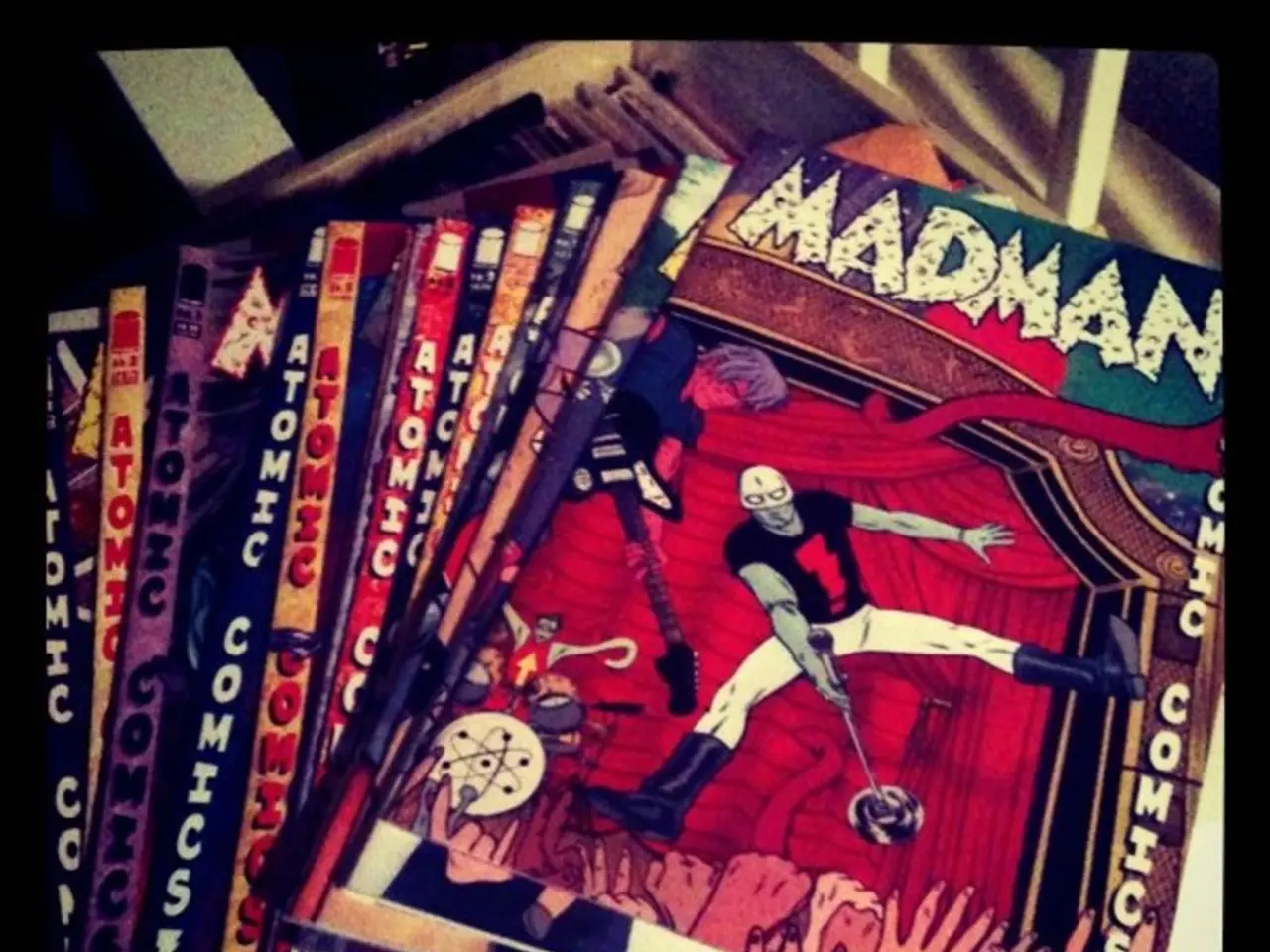Guiding the Creation of Kid's Illustrated Books: Boost Narrative Engagement Through Dialogue
In a thoughtful guest post, author and retired banker Yvonne Blackwood shares insights on the power of dialogue in children's literature. Blackwood, known for her popular children's books such as "Nosey Charlie Comes To Town," "Nosey Charlie Goes To Court," and "Nosey Charlie Chokes On A Wiener!", has also penned adult books like "Into Africa A Personal Journey," "Will That Be Cash or Cuffs?", and "Into Africa, the Return."
According to Blackwood, dialogue is a significant tool in literature, especially in children's books. It can make stories more engaging, visual, and appealing to a child reader. To effectively use dialogue, she suggests several strategies:
- Give each character a distinct voice: By using unique vocabulary and speech patterns, authors can reflect a character's age, background, or personality. For instance, older characters might use formal or dated phrases, while children could use slang or simple words. A scientist character might use technical terms, whereas a poetic one might speak metaphorically.
- Keep dialogue natural and age-appropriate: Using short sentences, simple words, and a touch of humor can make dialogue engaging for young readers. Natural-sounding dialogue helps children relate to characters and maintain interest.
- Use dialogue to show, not just tell: Dialogue can reveal character emotions, traits, and relationships. Instead of narrating feelings, reveal them through how characters speak—hesitant pauses for nervousness, humor masking fear, or curt answers hinting at disappointment.
- Incorporate subtext: Characters can say one thing but mean another, adding depth and subtlety that can engage older children and enrich the story.
- Use dialogue to reveal key plot points: Indirectly revealing plot points through dialogue helps move the story forward seamlessly while maintaining reader engagement. This avoids heavy exposition and keeps the narrative dynamic.
- Practice and test dialogue: Reading dialogue aloud in varied voices or even testing it on children can ensure it feels believable and fun.
These strategies ensure dialogue uniquely characterizes individuals, captivates children through relatable language and humor, and effectively drives the story without unnecessary narration. Blackwood's approach aligns with the imaginative and relatable nature of children’s literature, which reflects children’s perspectives and language use.
In her book "Nosey Charlie Goes To Court," Blackwood demonstrates the use of dialogue effectively. Charlie, a mischievous rabbit with intricate moves, returns home and apologizes to his parents and cousin after causing them worry.
Watching cartoons can also help become aware of current speech patterns. Blackwood does not discuss any specific rules about when to use dialogue, but emphasizes its potential to enhance a story by making it more engaging when used instead of long descriptions and endless narrative.
Read also:
- Education Exhibition: August 2024 Display and Demonstration
- Enhanced solar power for 600-watt power stations: the BOOSTER unit offers an upgrade.
- Revolutionizing healthcare through Remote Patient Monitoring Systems: A life-changing approach!
- What's the Ideal Lighting for Your Coral Culture in the Aquarium?




